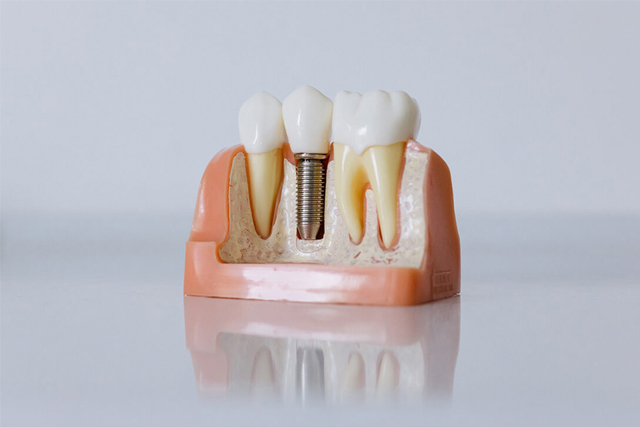Dental implants have revolutionized the field of dentistry, offering a reliable and long-lasting solution for tooth replacement. However, successful dental implantation often depends on the quality and quantity of the patient’s jawbone. Bone grafts play a crucial role in enhancing the longevity of dental implants by ensuring a solid foundation for the implant post. This blog explores the importance of bone grafts in dental implant procedures and how they contribute to the long-term success of Dental implants Melbourne.
Understanding Bone Grafts
A bone graft is a surgical procedure that involves transplanting bone tissue to repair and rebuild diseased or damaged bones. In the context of dental implants, bone grafting is used to augment the jawbone where it is too thin or soft to support an implant. Without sufficient bone density, the implant may fail to integrate properly with the jawbone, leading to implant failure.
Types of Bone Grafts
- Autografts: These are bone grafts taken from another part of the patient’s body, such as the hip or another area of the jaw. Autografts are considered the gold standard because they are biocompatible and have no risk of rejection.
- Allografts: These grafts come from a donor, typically a cadaver. Allografts are processed to ensure they are safe for transplantation. They are a popular choice due to their availability and the elimination of the need for a second surgical site.
- Xenografts: Derived from animal sources, usually cows, xenografts are treated to be safe and effective for human use. They provide a natural scaffold that encourages new bone growth.
- Synthetic Grafts: These are man-made materials that mimic the properties of natural bone. They are used when natural graft materials are not available or suitable.
The Role of Bone Grafts in Dental Implants
Bone grafts are essential for patients who have experienced bone loss due to periodontal disease, trauma, or prolonged tooth loss. Here’s how bone grafts enhance the longevity of dental implants near me:
1. Providing a Stable Foundation
A successful dental implant requires a stable and robust foundation. Bone grafts increase the volume and density of the jawbone, ensuring that the implant post has sufficient support. This stability is crucial for the osseointegration process, where the implant fuses with the bone, creating a secure anchor for the artificial tooth.
2. Preventing Implant Failure
Insufficient bone density can lead to implant failure as the implant may not integrate properly with the jawbone. By augmenting the bone, grafts minimize the risk of implant movement or loosening, significantly reducing the chances of failure.
3. Enhancing Aesthetic Outcomes
Bone grafts help in restoring the natural contours of the jawbone, which can be crucial for the aesthetic outcome of dental implants. A well-augmented bone structure ensures that the gums and the implant-supported teeth look natural and harmonious with the rest of the patient’s smile.
4. Promoting Long-Term Oral Health
Bone grafts not only provide immediate support for tooth implants but also contribute to long-term oral health. By restoring the jawbone, grafts help maintain the integrity of the facial structure and prevent further bone loss, which can affect adjacent teeth and overall dental health.
The Bone Grafting Procedure
The bone grafting procedure is typically performed under local anesthesia. The dentist or oral surgeon makes an incision in the gum to expose the bone and then places the graft material. Over time, the graft integrates with the existing bone, creating a solid base for the dental implant. The healing process can take several months, after which the implant procedure can proceed.
Conclusion
Bone grafts play a pivotal role in the success and longevity of dental implants. For patients with insufficient bone density, bone grafting offers the opportunity to benefit from the life-changing advantages of dental implants. Talk to an expert to know about dental implants cost today.
Frequently Asked Questions:
1. What is the purpose of a bone graft in dental implant procedures?
A bone graft is used to augment the jawbone when it is too thin or soft to support a dental implant. It provides a stable foundation for the implant, ensuring proper osseointegration and long-term success of the dental implant.
2. How long does the bone grafting process take?
The bone grafting procedure itself typically takes about an hour, but the healing process can take several months. During this time, the graft integrates with the existing bone, creating a solid base for the dental implant. The total time from grafting to implant placement can range from three to six months.
3. Are there different types of bone grafts?
Yes, there are four main types of bone grafts: autografts (from the patient’s own body), allografts (from a donor), xenografts (from animal sources), and synthetic grafts (man-made materials). Each type has its own advantages and is selected based on the patient’s specific needs and circumstances.
4. Is bone grafting necessary for all dental implant patients?
No, bone grafting is not necessary for all dental implant patients. It is typically required for those who have experienced significant bone loss due to periodontal disease, trauma, or prolonged tooth loss. A thorough evaluation by a dental professional will determine if a bone graft is needed.
5. What are the risks associated with bone grafting?
While bone grafting is generally safe, it carries some risks, including infection, graft rejection, and complications at the donor site (for autografts). However, with proper care and a skilled dental professional, these risks are minimized, and the procedure has a high success rate.

